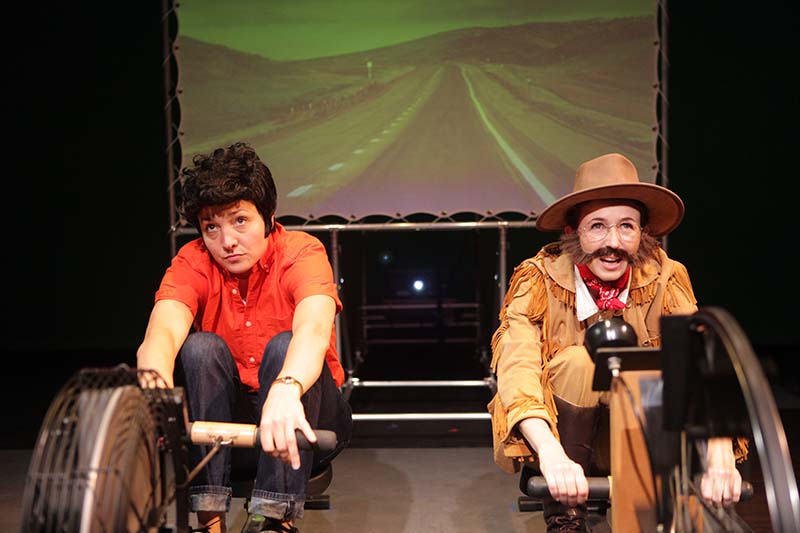No Tickets Needed: A Free Dose of Culture

Ann Arbor is a city that has plenty to offer, but sometimes the cultural highlights may be a *little* beyond the budget for those of us who may not have the most regular of paychecks. So for those of you who are looking for an arts experience while still saving $$$, look no further! This piece of blog is here to share the local arts events you can attend FOR FREE!
The University of Michigan’s School of Music, Theater, and Dance is a great source of low-or-no-cost access to displays of incredible talent. The UM-SMTD events calendar, lists concerts, lectures, and master classes taught by visiting instructors or guest faculty. This calendar has a $ symbol on events that have a cost, but thankfully those symbols are few and far between.
Earlier this month, I participated in an open-to-anyone master class led by a guest instructor in the dance program. I arrived and grabbed a seat, which turned out to be right beside the guest speaker, Anita Gonzalez. This was less awkward than it might have been because she was soon on the floor, warming up with the rest of the dancers. Gonzalez called the class to attention as the dancers stretched and flexed and effortlessly made shapes with their bodies. As she led activities, she explained the connection between breath, voice, and movement. Eventually, the dancers created moving historical vignettes of African American slaves working in the fields, with lumber, or on the railroads – singing the songs that kept them from despair and connecting them through their common goal of freedom. It was amazing to watch.
But wait, there’s more! The art of the written word is celebrated almost every day of the week at Literati Bookstore on Washington St! Just a few weeks ago I attended a (free!) reading at Literati of the new fiction bestseller The Nix by author Nathan Hill.
The Nix is Hill's first book that the Literati emcee described as “deceptively simple” but with the excitement of a “choose your own adventure story.” The major selling point for me was the claim that it was “a big book that reads fast.” Once Hill took the podium in that second floor Espresso Bar space, he explained The Nix was 10 years in the making, and once he started reading from the work, I had to agree that it was 10 years well spent. The reading he selected was from a chapter in which a student in the protagonist's logic class manages to include all 16 types of fallacy as they argue for a better grade.
The chapter is hilarious; my cheeks hurt by the end of the night from constantly smiling. Hill’s main character comes across as well-educated and flawed in relatable ways that make you want to keep reading. In this chapter, Hill also features a run-on sentence of epic proportions which required him to fortify himself with a drink water before reading it. It was truly a delight to hear this new author read, and I encourage readers to get their hands on a copy if only to discover why the words “aluminum” and “nuther” are so laughable.
Literati has tons of events, so check their calendar often to stay up to date. It is usually only their "ticketed events” that have an associated cost - most Literati events don’t cost a dime!
Liz Grapentine is a desk clerk at AADL. A graduate from Oakland University with a major in Music Education and a minor in English, Liz enjoys all the arts in every form. Liz is also a true Ann Arbor townie and a proud patron of the library since 1995.
Fabulous Fiction Firsts #615

Referred to as The Dollhouse * by the Manhattanites, the Barbizon Hotel for Women is where aspiring models and secretaries who often come from small towns, try to make it on their own in the 1950s.
Darby McLaughlin arrived from Ohio to take up secretarial studies at the Katherine Gibbs School . Compared the glamors Eileen Ford housemates, she was plain, self-conscious, and homesick. Befriended by Esme, a Barbizon maid, she was introduced to an entirely new side of New York City: seedy downtown jazz clubs.
Over half-a-century later, journalist Rose Lewin is evicted from one of the Barbizon condos when her divorced boyfriend decides to reunite with his family. Rose is forced to take refuge with her reclusive downstairs neighbor Darby, one of the original tenants. As Rose's life implodes around her, she is consumed with the story behind the rumors that Darby was involved in the grisly death of Esme. Yet as Rose's obsession deepens, the ethics of her investigation become increasingly murky, and neither woman will remain unchanged when the shocking truth is finally revealed.
"Darby and Rose, in alternating chapters, weave intricate threads into twists and turns that ultimately bring them together; the result is good old-fashioned suspense," (Publishers Weekly) by debut novelist Fiona Davis.
Sylvia Plath's The Bell Jar was based upon her time working at Mademoiselle and living at the Barbizon (called The Amazon in the novel). This historical landmark, built in 1927 is now upscale condos under the name Barbzon 63.
Readalike: Searching for Grace Kelly by Michael Callahan (another FFF) and Suzanne Rindell's Three-Martini Lunch will captivate readers with a strong sense of time and place as the authors bring a legendary New York building to life and populates it with memorable characters who find themselves in unusual situations.
* = starred review
Review: Encore’s Full Monty delivers laughs and quiet emotions
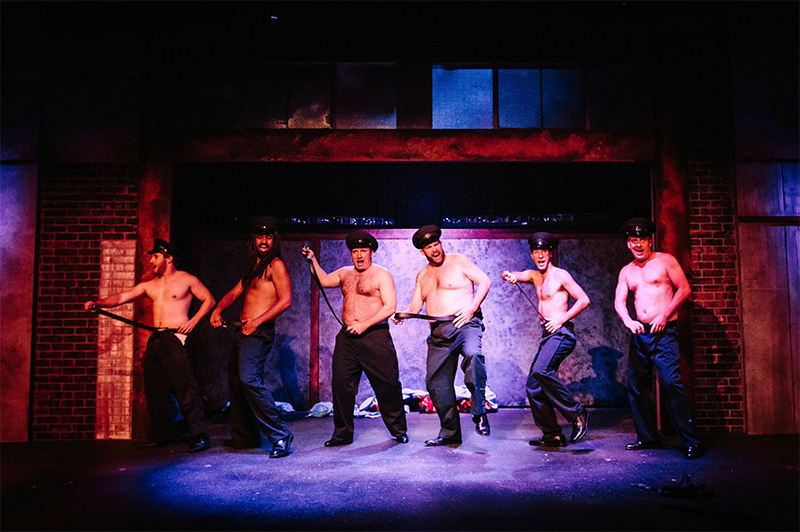
The Encore Musical Theatre Company is taking it all off and going the Full Monty for a lot of laughs and a bit of introspection.
The 1997 movie The Full Monty was part of a long tradition of British comedies with a biting social message. It was hilariously funny and a bit naughty but it was also at times a poignant and carefully observed view of a steel town, Sheffield, England, in the throes of yet another economic downturn.
In 2000 playwright Terrence McNally moved the story from England to equally downtrodden Buffalo, New York, and replaced the lively Top 40 R&B soundtrack with an original score with lyrics and music by David Yazbeck. The musical doesn’t have the grit or the deeper sense of class alienation of the movie, but it does have a nice blend of good humor, touching drama, and a bright jazzy score, which Encore brings beautifully to life.
Jerry Lukowski and Dave Bukatinsky are recently unemployed steel workers. Jerry is divorced, behind in his child support and afraid of losing contact with his middle-school-aged son. Dave is overweight, uneasy with his body and his life. After seeing the excitement created by a Chippendales-style strip show among the local women, Jerry decides that they should create their own show with dreams of making $50,000 and getting their lives back in order. Knowing their bodies would not be a lure, Jerry tells some local women that they will go the full monty, totally nude.
This production gets off to a great start by having two excellent actors in the lead roles. Eric Parker as Jerry brings energy, a bit of self-conscious swagger, and a sensitive change from macho to humane. Parker makes Jerry a full human being in search of who he really is. He isn’t a great singer but he gives real authority to tough songs like "Scrap," comic songs like "Big Ass Rock" and the gentle reflection of "Breeze Off the River," a love song to his sleeping son.
Greg Bailey’s Dave is a lumpish, dragging, sad-eyed mess as Dave. He’s good-hearted but unhappy with his body, his discomfort in what should be a happy marriage, and his loss of a job. Bailey captures just the right amount of languor and hangdog expression to make his transformation toward the end all the more triumphant.
The entire ensemble gives it their all. Dan Morrison is Harold, the laid off manager with the expensive wife. Morrison gives the character a nervous energy that goes from unease to “what the heck” let’s do it charm. Matthew Pecek is the mama’s boy Malcolm and he first appears as a suicidal mess, his thin body tightly wrapped, and then he opens up as he finds himself and love. Pecek, also, has a fine singing voice.
Jordan Harris plays Horse, a black man with the dance skills. Harris brings some extra zip to the dance numbers and some sly comedy when dealing with a certain black stereotype. The last member of the dance group is Ethan, a man obsessed with Donald O’Connor’s ability to climb walls and possessing a special asset for a stripper. Brendan Kelly is funny and also brings a good singing voice to his duet with Pecek.
Gayle Martin is Jeanette, the tough talking piano accompanist who has seen it all and played for the best of them (or so she says). Martin has some great lines, which she delivers with deadpan perfection.
A wilder bit of comedy is served up by the rubber-faced Sarah Briggs who plays Harold’s money loving wife. Briggs is a gifted comic actress who lights up the stage on "Life With Harold," a rollicking affirmation of love, and lets it all out in a later scene where her love shines through.
Alejandro Cantu has the difficult role of Nathan, Jerry’s long-suffering son. He loves his dad and his mom and he kind of likes his mom’s nerdy boyfriend. Cantu is a young actor who understands these conflicting emotions and just what they can do to you. His performance is direct, sensitive, and never “cute.”
In the small role of Keno, a studly Chippendales dancer, Colby Orton proves charming and captures the dancer’s sincere good intentions.
Thalia V. Schramm, who co-directed with Matthew Brennan, does double duty as Dave’s concerned wife, and provides the right amount of warmth when things get low.
Schramm and Brennan keep the comedy within the range of reality enough to make the serious moments have resonance. This is a comedy with serious content, from body image to economic justice to the plight of divorced fathers, and it plays them with some degree of respect.
Brennan is also the choreographer and he has the chore of directing some deliberately bad choreography in the beginning and then a triumphant Act One closer on "Michael Jordan’s Ball," a dance inspired by the great Bulls forward.
The small ensemble under musical director R. Mackenzie Lewis gives fine support from their perch. Yazbek’s score is serviceable, with some jazzy moments and a lively "Let it Go" ensemble number at the giddy and satisfying ending.
This is not a show for everyone. It has some rough language and bared backsides. But the end result is not raunchy and the music and story are upbeat.
Hugh Gallagher has written theater and film reviews over a 40-year newspaper career and was most recently managing editor of the Observer & Eccentric Newspapers in suburban Detroit.
The Full Monty continues at the Encore Musical Theatre, 3126 Broad Street in Dexter through Oct. 22. For times and ticket information, call the Encore Theatre Box Office at (734) 268-6200 or visit http://www.theencoretheatre.org.
Review: The TEAM's "RoosevElvis," presented by UMS
One unforgiving truth of fame is that when you become larger-than-life, you’re also conversely diminished, so as to seem elusively inhuman.
Brooklyn-based The TEAM’s experimental theater production RoosevElvis, now playing in Ann Arbor by way of University Musical Society, begins with a scene that illustrates this very point. Theodore Roosevelt (Kristen Sieh) and Elvis Presley (Libby King) sit next to one another in director’s chairs, sharing a microphone between them as they take turns voicing odd autobiographical facts and anecdotes.
Significantly, the back-and-forth doesn’t feel like two competitors trying to one-up each other – yes, Roosevelt stridently brags, but Elvis isn’t intimidated, blithely contributing his more modest memories with a laid back slouch. In this way, the exchange illustrates key differences between the two icons of American masculinity.
Sieh, decked out in Roosevelt’s trademark facial hair and glasses, as well as a fringed cowhide suit (Sieh designed the shows costumes as well), employs a sharp patrician delivery that echoes Katherine Hepburn. We hear about Harvard, and how he won an election at age 23. “What a great story,” she says often, congratulating herself.
King, as Elvis, wears blue suede shoes (of course), jeans, a white T-shirt, and a red, short-sleeved button down shirt, topped with a modest Elvis wig, of course. Far more retiring and relaxed than Roosevelt, Elvis talks about being an only child, moving to Memphis, and hearing his first record played nine times in a row on the radio.
But after this introduction, the green screen behind them disappears to reveal the drab apartment of Ann (King), a shy, lonely, 35 year old meat-packing plant employee in Rapid City, South Dakota. (During the transition, you see video footage of her at her workplace.) As Ann, King enters the apartment with a 6 pack, drinks a beer, and engages in a one-person conversation between herself and her idol, Elvis, about having, for the first time, connected with a woman via the Internet. Soon Brenda (Sieh), as a self-assured taxidermist who’s in town for a conference, emerges wrapped in an Elvis towel from the bathroom.
So yes, it takes a few minutes to get your bearings while watching RoosevElvis – and, fair warning, you likely never will completely. But that’s the aim of experimental work, of course. You have to let go of the desire/expectation for linearity and absorb all the ideas and trippy images that are playing out in front of you on stage.
Even so, there is at least a loose narrative at the center of RoosevElvis: Ann’s hopeful, extended date with Brenda – a Roosevelt fan, not coincidentally – turns sour as the two women take a road trip to the Badlands, including stops at Mt. Rushmore and Wall Drug. Though the show relies a bit too heavily on Andrew Schneider’s backdrop videos, the clips are often used in interesting ways. For instance, when Ann recoils from Brenda’s sexual candor in a diner, two video screens show the two women eating their meal in silence, thus underscoring the fact that what began as a hopeful adventure into love has ended in an uncomfortable, miserable stalemate.
Roosevelt and Elvis appear to have earned a place in Ann’s psyche because they embody ideals of masculinity, and as a woman who wears men’s Y-front briefs, and feels like “one of the guys” among the men working at her side at the meat packing plant, Ann is working through who she is, and whom she wants to be. Plus, her rough break-up with forthright, Roosevelt-like Brenda, who calls her “un-brave,” rattles her enough to drive her to take a solo trip to Graceland. Along the way, she leaves Roosevelt and Elvis behind in a hotel room, which they know bodes well for Ann; but when left with just each other, they clash and criticize each other, exiting with the classic line, “Let’s take this outside.”
There are many other delightful, strange, surprising moments in RoosevElvis, wittily directed by Rachel Chavkin: Sieh’s Roosevelt ballet, in which a gentle, beautiful grace is combined with showy muscle-flexing; a sudden, one-off Ann-Margaret moment; Roosevelt pulling on boxing gloves and calling for a TEAM member to start the footage from “Planet Earth,” so that he may punch at the bison individually on-screen (hysterical); Sieh’s funny, uncanny portrayal of a Spirit Airlines representative, urging Ann to stay on hold; the thoughtful use of rowing machines as a set piece (the set was designed by Nick Vaughan); and a Thelma & Louise tie-in that’s far more than a pop culture wink.
But King is the show’s emotional core, and she delivers a dignity, a humility, and a hunger that’s palpable, both in Elvis and Ann. That’s not to say that every part of the show hits its mark. With a running time of just over 90 minutes, the show feels oddly labored after a while, particularly following Brenda and Ann’s final, bracing phone conversation. And there’s a brief scene in which King and Sieh transform into diner waitresses for just a moment – and I still don’t know what purpose that served.
That’s OK, though. When an innovative theatrical company like The TEAM goes on an adventure and asks you to come along, I think it’s mostly worth the bumps in the road to experience the ride.
Jenn McKee is a former staff arts reporter for The Ann Arbor News, where she primarily covered theater and film events, and also wrote general features and occasional articles on books and music.
RoosevElvis runs through Saturday, October 1, at the Lydia Mendelssohn Theatre, 911 N. University Ave. Visit http://ums.org/performance/roosevelvis/ for more information and tickets, or call 734-764-2538.
Review: Marc Cohn Takes Us Back at The Ark
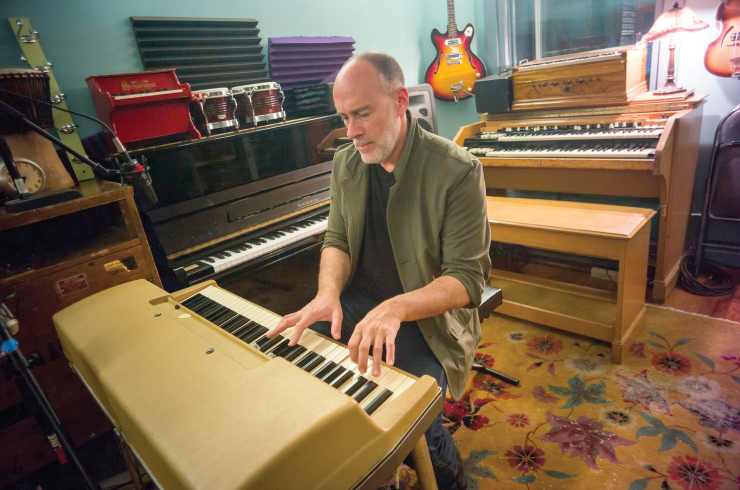
On Wednesday night at The Ark, Marc Cohn dialed us all back about 25 years, reprising his eponymous debut album and firing a host of emotional synapses throughout the appreciative near-capacity crowd.
Marc Cohn burst upon the pop music scene in 1991 with the release of Marc Cohn, going platinum and providing Mr. Cohn the recognition he justly deserved after 10 years of honing his craft as a struggling musician and performer. He was nominated for three Grammys that year and took home the Best New Artist award. Cohn followed with successful follow-up albums The Rainy Season and Burning the Daze… establishing him as a pre-eminent pop singer-songwriter, composer and instrumentalist in the mid-1990s. I was a big, big Marc Cohn fan back then, and though his subsequent work hasn’t achieved the commercial success of his early efforts, he continues to perform, collaborate and create new music for a legion of fans still emotionally bonded to his songs of love found, love lost and love reclaimed.
Last night – the first of two performances at The Ark on Wednesday and Friday – was purely nostalgic as for song selection. Many artists of Cohn’s era have recently dusted off their past works and re-played them in live commemorative tours. This silver anniversary tour began in March, continued through the summer including an overseas segment opening for Bonnie Raitt in Europe, and continues through May 2017. Wow. 57 year-old Marc Cohn evidenced no road weariness over the course of the evening, though his voice became raspier in the final third of his set.
Most of Marc’s sidemen have been playing with him for many years, and the sound was tight and expertly blended. Drummer Joe Bonadio did not have a conventional drum kit on stage, but it was never missed as he used a large African djembe drum, cajon and other percussion pieces to lay down the beat. Organist Glenn Patcha brought volume and depth to the music – he’s toured and recorded with Sheryl Crow, Bettye Lavette, Roger Waters, Ryan Adams, Willie Nelson, Loudon Wainwright and the great Levon Helm, to name a few. (In fact, the one song Cohn inserted into the playlist that was not on his first album was an homage to Helm: Listening to Levon, from Cohn’s 2007 album, Join the Parade.) Patcha channeled his best Garth Hudson organ style to take us back to The Band’s best days. Though I could barely see him hiding behind Cohn’s piano, guitarist Kevin Barry demonstrated not only his solo prowess but also his ability to achieve a seamless blend of sound with the other musicians…a craft honed over 40 years of masterful lap steel and guitar performances.
The album Marc Cohn played for us is unique to its genre for its variety and consistent excellence, varied in its emotions, and powerful in both words and music. After 25 years of playing these iconic songs, Marc Cohn – perhaps for the sake of his own sanity – has introduced chord variations, melodic departures, new riffs and improvisations that refreshed every song for us, yet still allowed us all to mouth every word of the songs that so many of us knew so well. The typically respectful Ark crowd would never sing along unless asked to (and we were) but as I looked down my row I would see most of my row mates mouthing the words right along with me.
The concert started (as does the album) with Walking in Memphis – the hit that catapulted him to fame. Cohn spoke of meeting Muriel Wilkins at the Hollywood Café in Memphis while on a trip to see Graceland. Inspired by her and his visit, Cohn wrote the largely autobiographical song. Throughout the night, Cohn continued to add meaning to the familiar music by explaining the personal core and impetus for his writing.
There was the song about his dad that makes me think about my dad: Silver Thunderbird. Dammit, Marc. Then a song that makes me think I’m 20 again: Perfect Love. C’mon, Marc. The last song of the album reminds me of good times with my ex-wife: True Companion. Marc!!! Judging from the sniffles in the audience, most of the 11 songs on the album touched deep memories for the largely middle-aged crowd. Well, I guess we asked for it; we even paid good money to be reminded of those times when music, memories and heart met in our lives.
I think often of performers like Marc whose light burned so brightly and then dimmed. Though he certainly wasn’t a one-hit wonder, his first hit was his biggest hit, and it would appear to less interested observers that he is riding his past fame from the early 90s until today. Nothing could be further from the truth; Cohn has continued to perform, collaborate and make new music over the last 25 years. To a more interested observer, and to all the true fans who showed up on Wednesday night, it wasn’t all about Walking in Memphis. It was about an album that has held up for 25 years, song for song, as one of the best pop albums of its era. It was about a musician’s career and the unusual arcs and twists it takes as he continues to work their craft, earn a living and perhaps exorcise some demons. And finally, it’s about firing those synapses to remember where we were, what we were doing and why we are so touched by Marc Cohn’s songs.
Just a few words about Seth Glier, who opened for Cohn last night with his sideman Joe Nerney. Glier has previously headlined at The Ark and brings a sweet tenor and sharp musical sensibility to any show, whether his own or as an opener. Glier paused for quiet moments during a couple of his songs, and you could have heard a pin drop – highly unusual for an opener while patrons are scuffling around looking for their seats. That’s why I love The Ark’s Ford Listening Room, and why I truly enjoyed Wednesday’s performance.
Don Alles is a marketing consultant, journalist, house concert host and musical wannabee, living in and loving his adopted home, Ann Arbor.
Marc Cohn plays at The Ark again Friday night, September 30th, and tickets are still available. Buy them here. Check out all of Marc Cohn’s music on Spotify. Check out Seth Glier’s music on Spotify.
Fabulous Fiction Firsts #614
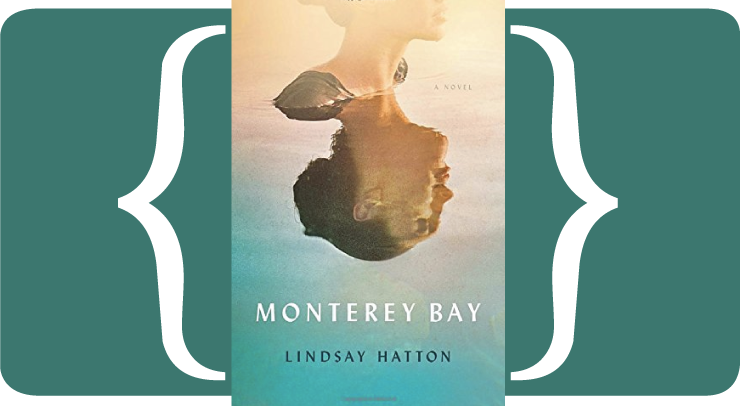
Monterey Bay *, a debut by Lindsay Hatton beautifully re-imagines the last days of John Steinbeck’s Cannery Row and its memorable characters, real and fictional.
Accompany her entrepreneur father Anders, Margot Fiske arrives in Monterey Bay a confident, self-sufficient (exceedingly tall) 15 year-old, having traveled the world with him, looking after their businesses. An accident in the tide pool brings her into contact with denizens of Cannery Row, where her talent as an artist/illustrator immediately impresses Ed Ricketts, a marine biologist known as Doc, who, against Steinbeck's displeasure, offers her a job to sketch the specimens he collects.
Ricketts, a charismatic, hard-drinking bohemian/scholar, quickly becomes the object of Margot’s fascination and soon her lover. In the meantime, Anders is quietly amassing support for the most ambitious and controversial project to date: the transformation of the Row’s largest cannery into an aquarium, while making himself unpopular with the most powerful family on the peninsula.
Finding herself often alone and at odds with her father, Margot gets to know Steinbeck, Ricketts’s benefactor, who is hiding out from Hollywood; and other locals who would play a crucial role in transforming life in Monterey in the decades to come.
"Hatton, in her first novel, takes up a formidable challenge for herself, setting her story in one of American literature’s most famous locations. She does an excellent job of recreating the Cannery Row that no longer exists, honoring the memory of Steinbeck and Ricketts and all the workers who once toiled there, as seen through the eyes of a precocious teenage heroine." (Publishers Weekly)
Readers will undoubtedly want to revisit Cannery Row and its sequel Sweet Thursday, the basis for the 1982 movie adaptation, starring Nick Nolte and Debra Winger. To find out more about John Steinbeck's legendary voyage with Ed Ricketts that serves as a critical turning point in Hatton's novel, check out the documentary Journey to the Sea of Cortez.
* = starred review
TAKESHI TAKAHARA: IN LOVE WITH THE PROCESS
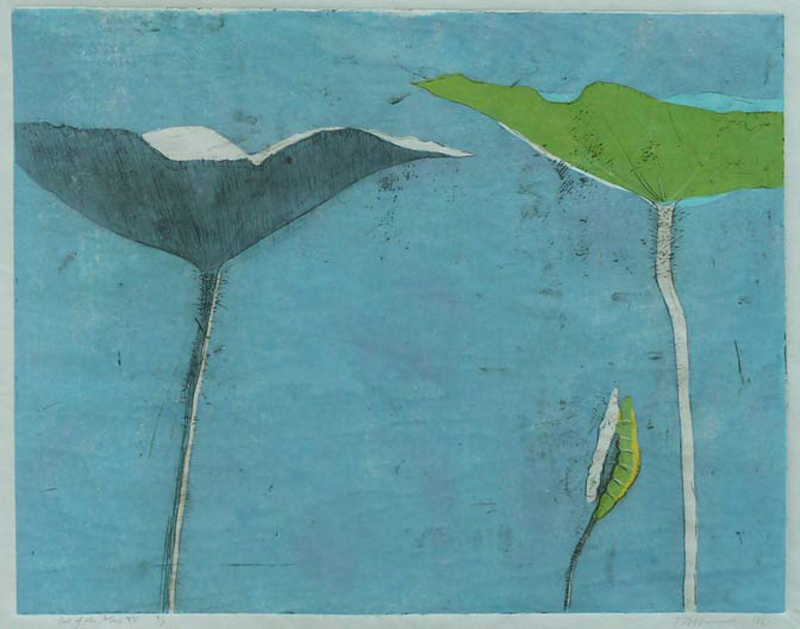
KA Letts (of RustbeltArts.com) has written a great review of the WSG Gallery's current exhibition.
"Takeshi Takahara believes in the handmade, the one-of-a-kind, the idiosyncratic. This might seem a counterintuitive attitude in an accomplished master of intaglio printmaking, a medium which embodies the aesthetic of the multiple and reproducible. But in his first solo show at WSG Gallery he demonstrates that his unique, eco-friendly hybrid intaglio/woodcut process for creating small print editions (often only 5 to 9 per title) can deliver artworks that pack all the punch of a one-of-a-kind painting. Imperfection, a meticulously curated and well arranged grouping of prints on the theme of the lotus, is on view in the WSG gallery from now until October 22."
Visit RustbeltArts.com to read the review in its entirety.
K.A. Letts is an artist and art blogger. She has shown her work regionally and nationally and in 2015 won the Toledo Federation of Art Societies Purchase Award while participating in the TAAE95 Exhibit at the Toledo Museum of Art. You can find more of her work at RustbeltArts.com.
Imperfection will run at the WSG Gallery, 306 S. Main Street, through October 22, 2016. The WSG Gallery is open Tuesday-Thursday, noon–6 pm; Friday-Saturday, noon-9 pm; and Sunday 12-5 pm. For information, call 734-761-2287.
Review: Re: Formation at the Ann Arbor Art Center

The Ann Arbor Art Center’s latest exhibit is the Re: Formation to help begin all reformations.
As the exhibit’s statement tells us, the display “examines this unique moment [in history] when ordinary people are declaring a la Peter Finch [from Sidney Lumet’s 1977 film Network]: “‘I’m mad as hell and I won’t take it anymore.’”
This is indeed the precise sentiment of this unceasingly clever exhibit of art.
For Re: Formation, the latest offering of Rocco DePietro and Gloria Pritschet, founders and directors of the Gallery Project, follows suit with this artful duo’s willingness to go where most other forums fear to tread. Ann Arbor's Art Center exhibit pairs with an earlier August incarnation of the show exhibited through the auspices of Toledo, OH’s Art Commission.
As the exhibit statement continues, “What is different at this time is that people who have been silent, or silenced, are standing up, speaking out, and mobilizing for needed change. Highly divergent in life styles with broad-ranging backgrounds, beliefs, and values, these individuals are expressing justifiable anger at the accumulation of horrific events and unrelenting injustices that characterize our current era.
“They are teaming up across race, gender, politics, and social status with empathy and compassion for their fellow human beings. Their actions are reestablishing belief in a positive future based on fairness, equity, and genuine possibility for all.
“Is this a tipping point, a moment for reform, or even a revolution? Or is it just another blip before capitulation and regression?”
These are, of course, highly potent questions. The very nature of this articulation will be considered by some as transgressive. But the paradox, of course, is that the very nature of the contention leaves motivation and avocation hanging equally in the balance.
Because of course, the definition of art itself is being challenged in Re: Formation. What is the purpose of art? Is it meant to merely have a decorative function? Or is it meant to provoke and challenge one’s preconceptions?
The Gallery Project is letting us know what they think, and towards this end DePietro and Pritschet have mobilized a formidable array of national, regional, and local talent whose outlooks cut across a whole host of social, political, and cultural viewpoints. There are (to borrow from a questionable cliché) no sacred cows here. And even if there were, it would be just as many of the artists on display who would want to devour it as there are others who would hold it sacred.
Local talents on display are Ann Arbor’s Heather Accurso, Morgan Barrie, Carolyn Barritt, Ruth Crowe , K.A. Letts, Melanie Manos, Michael Nagara, Sharon Que, Jesse Richard, Meagan Shein, Ellen Wilt and Richard Wilt. Dexter is represented by Tohru Kanayama; with participation by Ypsilanti’s Nick Azzaro and Jessica Tenbusch.
Among the works on display, Azzaro gives us a potent taste of Re: Formation’s disposition. His unframed “Progress at the Ol’ Smith Furniture Building” color photograph touches on all the ideas stated in the exhibition’s gallery statement.
There are, of course, Americans who to this day think of the Confederate States of America’s second Battle Flag as a sacred totem of historic significance with as much a symbolic value as the United States’ stars and stripes. Indeed, these stars and bars—in either its peace or war confederate configuration—are still part of the symbol (and considered a venerated heritage) in parts of the American south and officially designated in three southern states.
But the flag is also a highly potent symbol of a heritage that is itself emblematic of one of the most controversial aspects of our republic’s heritage. Representative of the defense of slavery as a political institution, the Dixie Battle Flag serves as a visceral reminder of attitudes that cut across economic, social, and cultural lines. As such it’s not uncommon to find the flag on private property such as flag pole or car—now often in a setting that is seemingly as much defiance as it is supportive.
Thus Azzaro’s photograph transgresses these values by vividly appropriating the symbol and subverting its erstwhile significance. Running across a dilapidated storefront with this flag in flames, “Progress at the Ol’ Smith Furniture Building” is a straightforward, aggressive recasting of social, economic, political, and cultural American expectations.
Just like many other artworks on display in this highly emotionally charged exhibit, if Azzaro’s “Progress at the Ol’ Smith Furniture Building” isn’t a Re: Formation of American expectations, it’s hard to imagine what might be.
John Carlos Cantú has written on our community's visual arts in a number of different periodicals.
Re:Formation will run through October 8, 2016, at the Ann Arbor Art Center, 117 W. Liberty St. Exhibit hours are 10 am to 7 pm, Monday-Friday; 10 am to 6 pm, Saturday; and noon to 5 pm, Sunday. For information, call (734) 994-8004.
Fabulous Fiction Firsts #613

Following in her illustrious parents' footsteps, Irene is a professional spy for a shadowy organization called the The (Invisible) Library * * that collects important works of fiction from all of the different realities. After wrapping up a most difficult case, she finds herself immediately assigned a new mission - to retrieve a particularly dangerous book in an alternative London while shackled with a new trainee, Kai.
When they arrive, they find the city populated with vampires, werewolves, and Fair Folk, and the book they are after, has already been stolen. Soon they realize several parties are prepared to fight to the death for the tome, one of them a handsome detective named Peregrine Vale. It also becomes clear fo Irene that Kai is hiding secrets, secrets that could prove as deadly as the chaos-filled world they find themselves in.
"Bibliophiles will go wild for this engaging debut, as Genevieve Cogman hits all the high notes for enjoyable fantasy. Intriguing characters and fast-paced action are wrapped up in a spellbinding, well-built world." (Library Journal)
"Reminiscent of the works of Diana Wynne Jones and Neil Gaiman, Cogman's novel is a true treat to read." (Publishers Weekly)
I hope you are a fast reader. A much anticipated sequel The Masked City is on its way, and not a minute too soon.
* * = starred reviews
Review: Liberty's Secret: The 100% All-American Musical

"This is like the bar mitzvah I never had," U-M art and music professor Andy Kirshner joked while standing on the Michigan Theater's stage on Thursday evening, hosting the premiere screening of his locally made, original feature film musical, Liberty's Secret.
Indeed, the quip aptly described the event's affectionate, enthusiastic, communal atmosphere. (Kirshner's last words at the mic were, "Could my wife please raise her hand, so I can find my seat?") Approximately a thousand people turned out to see Kirshner's film about an unlikely romance that blooms between a jaded, Jewish Presidential campaign communications manager (Nikki, played by Chelsea native and U-M grad Cara AnnMarie) and a sheltered, small-town pastor's daughter (Liberty, played by Oakland University grad Jaclene Wilk) whose angelic singing voice makes her not just America's viral sweetheart, but the picture of "family values" wholesomeness that Nikki's moderate Republican candidate, Kenny Weston (Williamston Theatre co-founder John Lepard), needs to win.
Clearly, Thursday night's crowd enjoyed playing "spot the local artist": There's U-M professor and theater artist Malcolm Tulip, leading a "gender re-orientation camp" number in the Michigan Union ballroom! There's former Performance Network artistic director and actor David Wolber, playing a security guard that puts the stop on Purple Rose Theatre artist Tom Whalen! There's local actor Rusty Mewha, playing Weston's cynical campaign manager! And in what might have been the most well-received featured appearance, Kirshner himself, wearing a bushy wig, played Rolf Schnitzel (?!), host of the cable news program, The Briefing Room.
Local filming locations included Ann Arbor's Millenium Club, the Vineyard Church, a former restaurant in Ypsilanti, a wedding chapel in Milan and more.
Getting the tone right for satire is often tricky, and Kirshner stumbles occasionally, making Liberty's well-intentioned father and his congregation too cartoonish at times, and painting Weston in broad, George W. Bush-style strokes. He wisely checks this impulse now and then, most notably when Liberty calls out Nikki for looking down her nose at everyone who believes in God. And there are some pretty fun touches, too, like when Weston's debate prep takes place in front of a white board that has mixed-up messages like "It's the stupid economy," and when Liberty's definition of love as self-sacrifice prompts Nikki to reply, "No, that's co-dependency."
Kirshner's original score, while varied and sophisticated, only sometimes sounds like it belongs in the world of musical theater. The most successful number by far is a tap duet between Liberty and Nikki called "Stay on Message," which not only spotlights Debbie Williams' fun choreography, but dissects the doublespeak of political rhetoric, as Nikki instructs Liberty on how to translate terms for the media ("Don't say 'intervention,' say 'keeping peace,'" etc.). In addition, the song goes some distance toward partially filling a larger gap in the narrative, which is: what makes these two very different women fall in love with each other? We're told that they do, but there's little meat on the bones of this particular (and crucial) development.
But these artistic quibbles don't detract from the fabulously fun party that hundreds of locals, students and community members both, attended to collectively celebrate a project that brought them together. The film's two female leads do fine work, and Lepard seems to have the time of his life playing a bumbling politician. Mewha's reaction shots alone earn big laughs, and Alfrelynn J. Roberts, Nikki's colleague and friend, gracefully grounds the story by way of sharing her own past with Liberty's father.
So Liberty's Secret may be destined to be more of a local hit than a national one, but in many ways, it's Kirshner's funny, sweet valentine to the community he calls home; and because of how recently the Supreme Count ruled in favor of same-sex marriage, watching a wedding with two brides - who serenade each other, no less - can be quite moving.
(Liberty's Secret is available for pre-order at http://libertysecret.com, with delivery expected in early November. Shortly thereafter, it will be available on iTunes, Amazon Prime, and other formats.)
Jenn McKee is a former staff arts reporter for The Ann Arbor News, where she primarily covered theater and film events, and also wrote general features and occasional articles on books and music.


